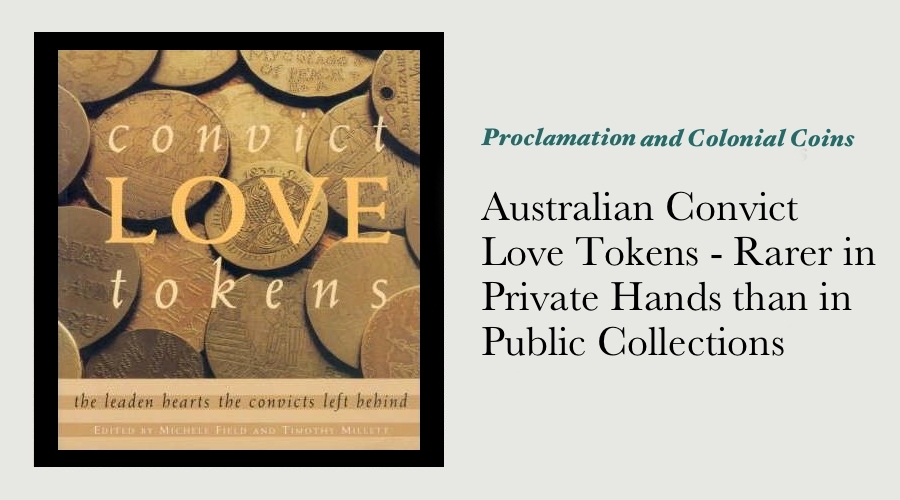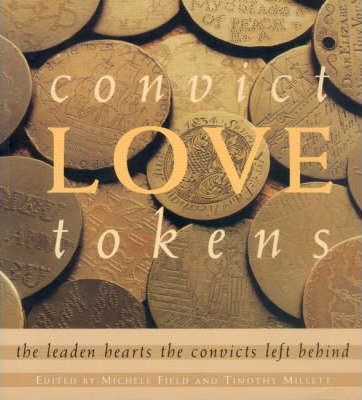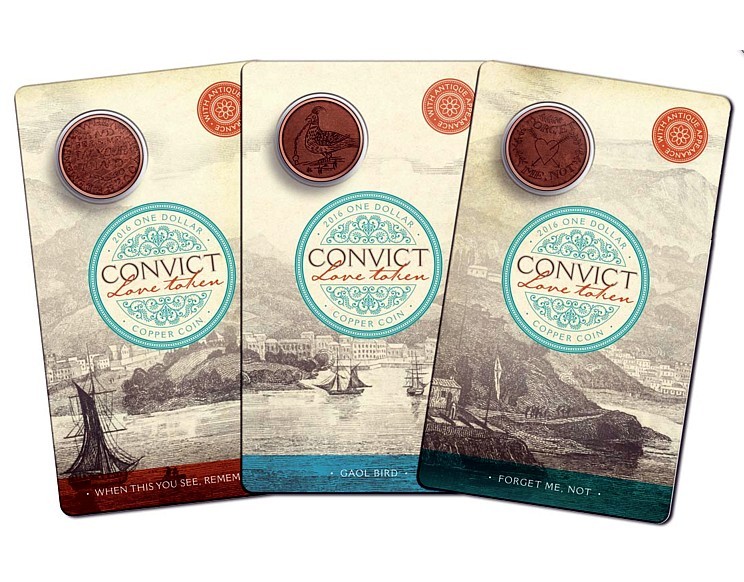Australian Convict Love Tokens - Rarer in Private Hands than in Public Collections

Convict love tokens are one of the few numismatic items in Australia that appear in mainstream media more than numismatic media. Collectors love nothing more than to sink their teeth into a series - to allocate an item to a category and type, to understand how it fits into the scheme of things.
The research that has been conducted to tradesman’s tokens is a great example of that numismatic interest - tradesman’s tokens have been categorised according to denomination, issuer, date, region of issue, and even die type.
Although tradesman’s tokens are nowhere near as popular as silver or copper predecimal coins, I’d estimate that around a dozen books, booklets and pamphlets have been published on them over the years, the first dating back to the late 1800’s. A well-studied collector of tokens can take a look at an item from that series, and tell you in in instant where, when and by whom it was issued.
I believe it’s fair to say that, despite their incredible history and appeal, convict love tokens have enjoyed no such detailed numismatic investigation. I don’t recall the last time I read an article on a convict love token in a numismatic magazine, even though they are unequivocally numismatic items that have direct links to our national history.
The fact that there has been limited numismatic study into these compelling objects does not mean that no research at all has been conducted into them however - historians in both Australia and Britain have spent countless hours exploring the stories behind individual examples. It is the social history they have explored however, as this is where their appeal lies.
This is how they appear in the mainstream media - a record price is mentioned in a press release for an auction, and the journalist picks up on the story behind the token.

Hand-made Decades Before Our First Tradesman’s Tokens
Most commercial tokens collected by Australians were struck for a specific purpose - to circulate as small change, or to advertise the business that commissioned them. They were commissioned, designed and struck in an orderly process that was repeated and perfected by issuers and manufacturers dozens of times throughout the mid to late 1800’s.
On the other hand, convict love tokens were hand-made many decades before our first tradesman’s tokens, by private individuals and often on the spur of the moment, under circumstances and with equipment that would surely have been challenging to the finest craftsman.
Love tokens were given by convicts to their loved ones and families as mementos. They were all made in Britain, often in the hulks of a ship or in the cells of a gaol, using whatever coins and tools were at hand. They were intended to act as a lasting reminder of a relationship with someone that was to be transported to the other side of the world, perhaps never to be seen again. The design themes and messages included on them are touching and personal, and evoke just how heart-breaking it would have been to be separated from families and loved ones by cell walls, and ultimately oceans and great distances.
In The Chronicles of Newgate, Arthur Griffiths quotes a prison inspector's report from the parliamentary papers of 1836: "The most peaceably disposed found some occupation in Newgate making tokens, leaden hearts, and grinding the impression of penny-pieces, then pricking figures or words on them to give to their friends as memorials. The initials or names of a loving pair were punched upon them, together with a heart or some symbol of affection, sometimes with a motto such as 'True for ever', 'Love for life’.”[1]
The fact that these tokens were hand-made using official coinage often right under the noses of convict officials speaks volumes of the boldness, resilience and resourcefulness that many convicts had under the strain of incredible circumstances.
Far More Are Known in Public Collections Than In Private Hands

The largest collection of convict love tokens was compiled by the British numismatist Timothy Millett. Millet first came across them while working for rare coin dealers Baldwin’s (his family’s business), they became an area of keen interest for several decades. Millet’s collection was used as the basis of a book published by the Numismatic Association of Australia in 1998, as well as an exhibition by the Powerhouse Museum at the Hyde Park Barracks in the same year. Millet’s collection of 307 convict love tokens was subsequently sold to the National Museum of Australian (NMA) in 2008, and is understood to have changed hands for A$671,000.
The NMA already had several tokens in it’s collection, and has added to them since 2008, bringing the total number of tokens it holds to 314. Other public institutions that are known to hold convict tokens in their collections include the Powerhouse Museum and the National Maritime Museum, both in Sydney.
Although such tokens do appear in public numismatic auctions from time to time, it is fair to say they are very rarely seen here in Australia. On that basis alone, the number held by public institutions in Australia would certainly dwarf the number held privately.
As might be concluded by the nature of their origin and distribution, any “fresh” convict love tokens that might be made available to the market invariably appear in the United Kingdom. They are always the subject of detailed research by those with a keen interest in colonial history, and the poignant mementoes left by our convict forebears for their loved ones.
Footnotes:
[1] Griffiths; Arthur, "Chronicles of Newgate", Chapman and Hall, London, 1884.